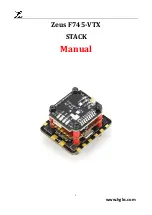
Rev 3.0/10-06
QUADRA-TILT ROTATOR • DC-VOLTAGE
Page 25
Adjustment Procedure
WARNING: Lifting capacity decreases whenever vacuum switch is adjusted to
maintain lower vacuum level.
1) Using a 1/4" open-end wrench (as provided), turn the adjustment screw
about 1/6th turn at a time (approximately one flat of the screw head).
To maintain a
lower
vacuum level, turn the screw
clockwise
(when viewing
vacuum switch from end with electrical connectors).
To maintain a
higher
vacuum level, turn the screw
counter-clockwise
(when
viewing vacuum switch from end with electrical connectors).
2) Recheck the vacuum switch setting following each 1/6th turn of the
adjustment screw. In order to test the adjustment accurately,
release the vacuum pads completely before reapplying them to a
test surface.
When the vacuum switch is adjusted correctly, the vacuum pump turns off only
after
vacuum
increases to a level higher than the minimum lifting level; and the pump turns on again
before
vacuum decreases to a level lower than the minimum lifting level.
1 ELECTRICAL CONNECTORS
2 ADJUSTMENT SCREW
3 TO MAINTAIN HIGHER VACUUM
4 TO MAINTAIN LOWER VACUUM






























